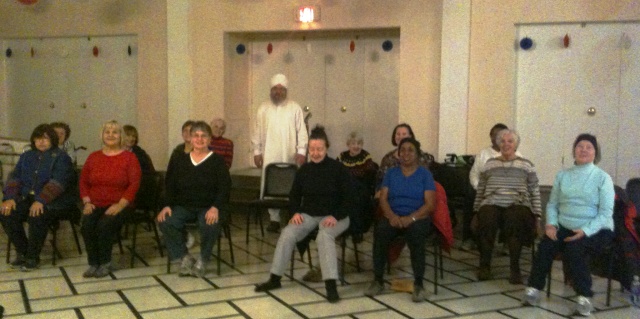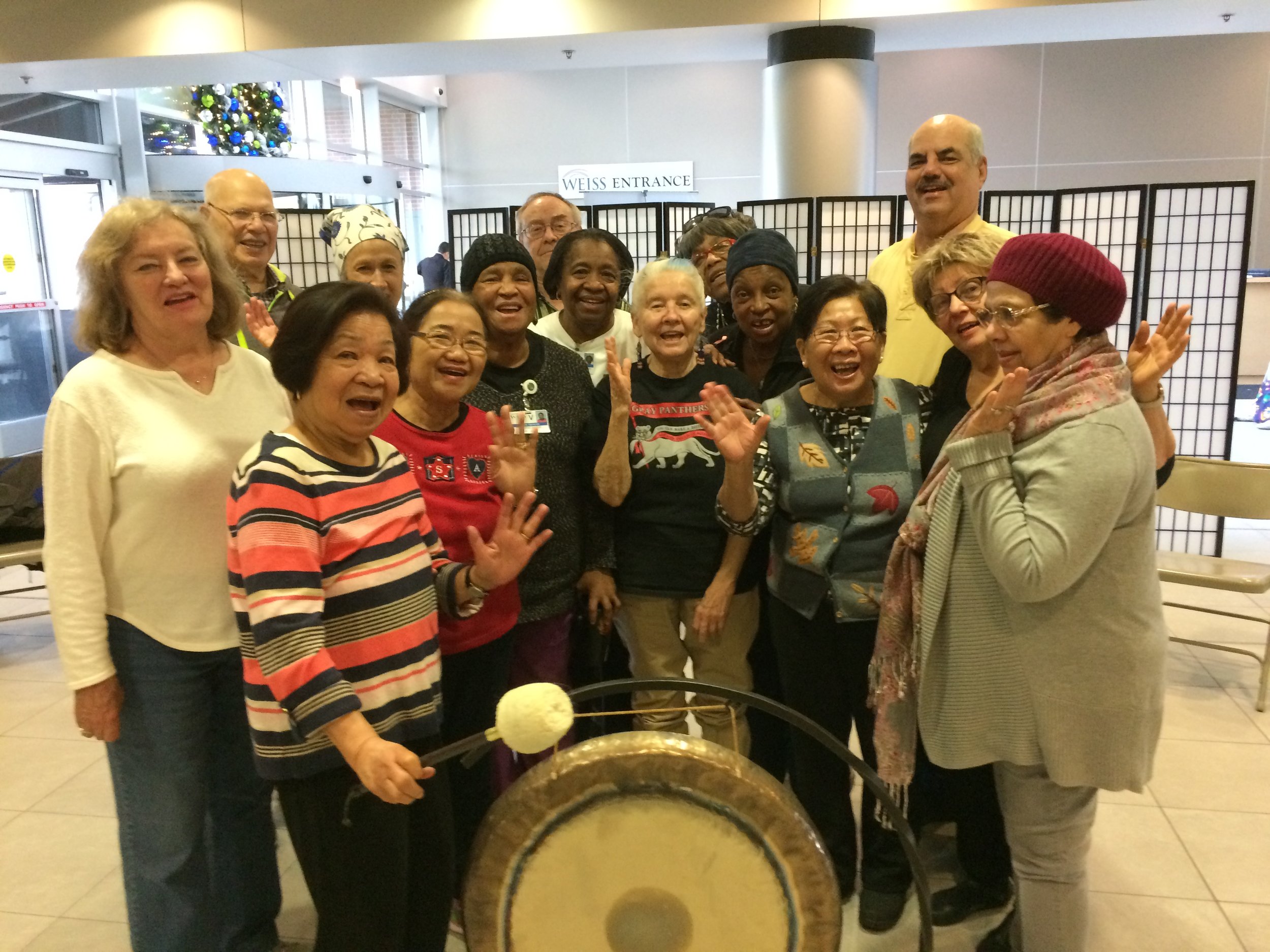Chair Yoga: Sitting With Spirit
Appropriate and DYNAMIC for all ages and abilities.
Now on Zoom - Go to Class Schedule to register for class!
To arrange a class or private session contact Shiva Singh
at 773-480-3272 or shivasingh@spiritrisingyoga.org
Kundalini Yoga in Chairs is taught by trained, insured and certified teachers who have a respect for aging and enjoy spending time with seniors.
We've been teaching Kundalini Yoga in Chairs in Nursing Homes, Senior Residential Communities and Senior Centers, as well as numerous presentations for specific populations.
The practices can be enjoyed by those with any level of ability. Each class uses variations of familiar yoga postures that have been safely adapted specifically for those who may be frail or with limited mobility or cognitive issues. We incorporate dynamic movement, breathing exercises, deep relaxation, meditation and sound.
Students learn to relax, improve balance and breathing as well as mental clarity and better sleep. They can learn to use the practices on their own.
In our classes, when I asked what they like about them the emphatic response is “The Breathing!” Here is the basic way to learn healthy Natural Breathing:
Natural Breathing/Diaphragmatic Breathing
Natural breathing is also called Diaphragmatic Breathing. Life depends on breathing. At some point in our lives we may have been frightened, caught our breath and sucked in our belly, essentially armoring our navel, which results in a lifetime of Paradoxical Breathing. This occurs when the chest wall or abdomen moves in when inhaling and out when exhaling, which is the opposite of normal breathing!
One of the goals of Diaphragmatic Breathing is to trigger the Relaxation Response which is meant to counter the stress (or “fight or flight”) response.
How to do it:
Sit in a comfortable chair, both feet on the floor, knees as wide as your hips. Sit with your lower back firmly in the chair so that you don’t lean back. Have your diaphragm gently lifted, the shoulders rolled back and down, shoulder blades will gently come towards each other. Have the chin level to the floor.
Breathing through the nose, on the inhale expand the lower abdomen. It’s like you are filling your belly with air, but not really. You are just creating room for the lungs to expand by allow the diaphragm to flatten and draw the breath in. Similarly breathing through the nose, as you exhale draw the lower abdomen towards your spine which allows the diaphragm to rise into its relaxed position and gently push the breath out. There should be relatively little movement of the upper chest.
Practice this regularly until it becomes the way you breath.
Now if you feel light headed, just stop the practice and “take a breath”.

















